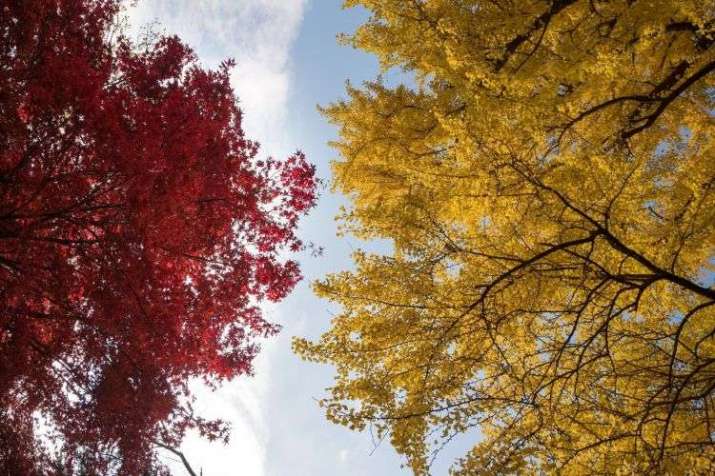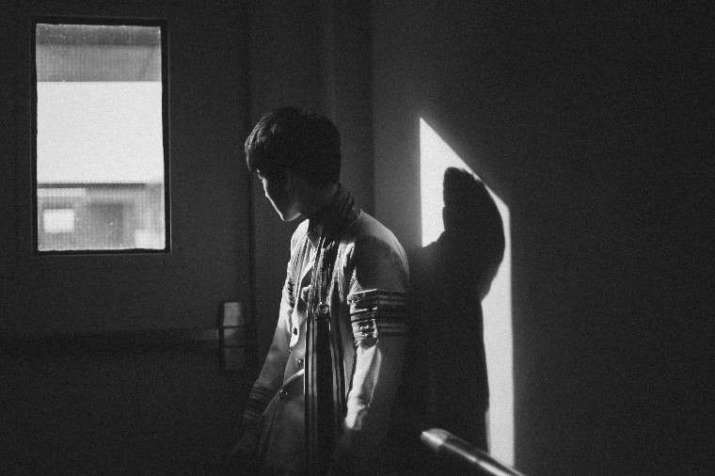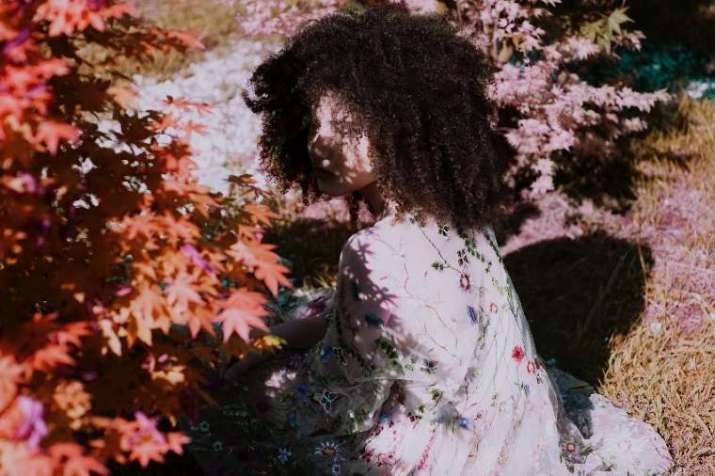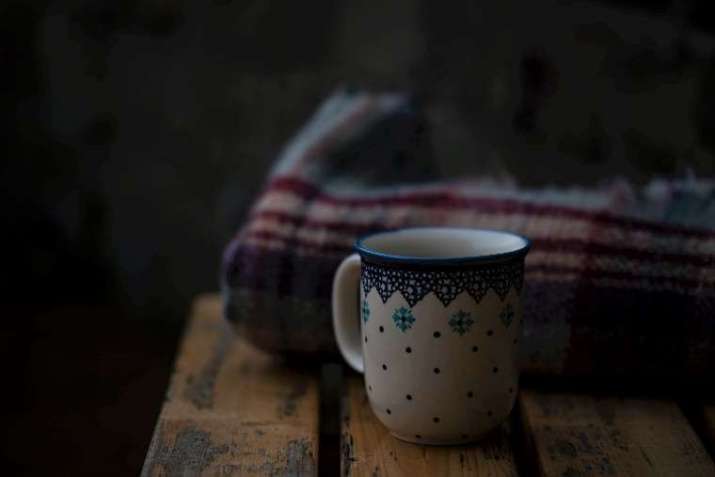FEATURES|COLUMNS|Creativity and Contemplation
Quest for One True Thing
 Photo by Tetiana Shyshkina
Photo by Tetiana ShyshkinaLong ago there was a book and a course called Be Here Now. Right now, today, in this moment, can I be here now? Is there still joy amid grief, anxiety, or loss? Not without truly acknowledging what is the real, genuine, and authentic here and now, for me, for my community, for my world. In all the myriad ways that we go about our ordinary lives, or our spiritual lives, we often seek to contribute, to find meaning, to make a living. And to find enjoyment. But what does enjoyment mean amid the chaos of the climate emergency? Or with societies unraveling, with fear and panic about disease, with financial hardships, how do we infuse joy into the meaning (or the lack thereof) of daily experience?
What if I take as my meditation the task to find one true thing and just experience it for a few minutes or a part of the day. Truth is subjective, so my one true thing is fleeting, personal, temporal, bound by karma. That’s alright; many of us are familiar with the practice of tonglen, taking in the suffering of others and breathing out goodness and well-being for sentient beings. But even before we engage in thinking about other beings, we must acknowledge the being that we are here and now, and find one true thing about this day or this moment to acknowledge and experience, whether it is painful or joyful, good or bad, hopeful or fearful.
 Photo by Kazuend
Photo by KazuendThis momentary one true thing idea relates to deity practice in Vajrayana Buddhism, where it could be said that the different deity manifestations are kaleidoscopic facets of our own psychological nature. They are constantly evolving and changing, yet through practicing a given deity sadhana, we can engage with certain aspects for a while. We visualize deity as an ever-changing landscape of emotions, memories, feelings, thoughts, and concepts about who we are. In this way we can broaden our self-concept or let it go. By contrast, in daily life we must uphold our personness, our persona or individuality, our name or place, to maintain a base level of sanity and to navigate social contexts. Even when alone, whether by choice or being in retreat or by necessity or by default, we must navigate a certain base level of sanity in order to function. To continue surviving and hopefully thriving. But the ebb and flow of survival and “thrival” are directly related to our ability to experience what is happening in and around us, and to continually discern what is true for us. This is a very subjective process, whether or not we are a meditator.
Everyone has the potential to alter their experience by applying the tool of our mind to what is happening and how we perceive, cognize, and process it, and then make meaning from it. Searching for one true thing is like coming back to this breath or the feeling of weight in my feet or my sit bones, or in noticing the sights and smells of changing fall leaves outside my window, or hearing the dog barking across the street. We can apply this inwardly as well: what is one true thing that I know about myself or my life, right here right now?
 Photo by Soragrit Wongsa
Photo by Soragrit WongsaWhether right now is good or bad, my true heart's desire or my disappointment is not really the point. Rather, the purpose is finding a pause in the ongoing narrative, which can be quite cacophonous or disorienting, or it could be quite boring or sad, or it could just be very full of contentment and appreciation, whatever the flavor of our current experience. There is a way in which we can pause, slow down, acknowledge one true thing for a few minutes or moments, and then of course everything will continue changing. So my one true thing—my very being—will also change.
I am now noticing the way that the metal legs of the kitchen table rest on the carpet and how these two inanimate objects are in relationship with one another; one smooth and cold and hard, the other fuzzy and comforting underfoot. And just noticing this one true thing, which is just true in this particular way in this moment to particular me, is still a way of being present and calming the mind, the nervous system, and being aware of what is: simply acknowledging my aliveness in an environment. In this moment, in the kitchen, there is shelter over my head. If I want to be esoteric about it, I have things to be grateful for. But even on a cellular level, I am in relationship with the furniture in the room, with the neighbors across the street—alhough I do not yet know their names—and to people across the world who have connected with me online. Again, back to my own breath, leaving and entering my body as it does in a way that I can relish. And notice, and wonder, when it will no longer be so, or when it will be less easy to inhale and exhale this life-giving breath into and out of this holy body. This one true thing that I can notice in the moment and just be with, whether I feel resentment or appreciation for this body in this moment or this kitchen table on this carpet. It is not a matter of having to choose, to define, to analyze, or to make judgments, but simply to notice.
One purpose, perhaps, of finding one true thing, whenever we wish, is to cut through grief, rumination, or anxiety that comes along with a general malaise these days, or with specific points of personal or communal suffering. We can rediscover joy amid sorrow or uncertainty by tuning in to the sights, sounds, smells, and tastes all around us.
 Photo by Tiko Giorgadze
Photo by Tiko GiorgadzeIn this noticing, I become a bit more fully alive and realize that even though I am alone in this room, I am certainly not alone. I see a spider in the corner, above the kitchen sink, and I hear people upstairs and across the street, and all around the world, who are also wondering: What is the meaning in all of this? When will the pain end? How did I become so fortunate to have these circumstances? And a million other thoughts and feelings, memories and perceptions that connect us all, whether or not we acknowledge it. And so, for this moment, merely being in connection with others is enough.
One true thing I know is that I can breathe right now and I am at home, in this place, which is temporary, but it is still a home for me right now, and that people all over the world have wishes and dreams, hopes and fears and disappointments, and that we are intertwined for certain. If we are still breathing then it is enough to simply do so, gently, deeply, with awareness and a wish that all beings may also share this noticing-breathing-being for one true moment in their day.
 Photo by Joanna Kosinska
Photo by Joanna KosinskaSarah C. Beasley (Sera Kunzang Lhamo), 2019 Nautilus Gold award-winning author of Kindness for all Creatures: Buddhist Advice for Compassionate Animal Care (Shambhala 2019), has been a Nyingma practitioner since 2000. Sarah is a Certified Teacher, and an experienced writer and artist, with an MA in Educational Leadership and a BA in Studio Art. Sarah spent six years in traditional retreat under the guidance of Lama Tharchin Rinpoche and Thinley Norbu Rinpoche. With a lifelong passion for wilderness, she has summited Mt. Kenya and Mt. Baker, among other peaks. Her book and other works can be seen at www.sarahcbeasley.com.
Related features from Buddhistdoor Global
Where There Is Grief, Let There Be Compassion
Small Losses and Great Grief
Go to Your Room – Some Impacts of Isolation and Quarantine in 2020
Coping with Fear, Anxiety, and Panic During the Pandemic
Buddhistdoor View: Embracing Fear and Uncertainty














